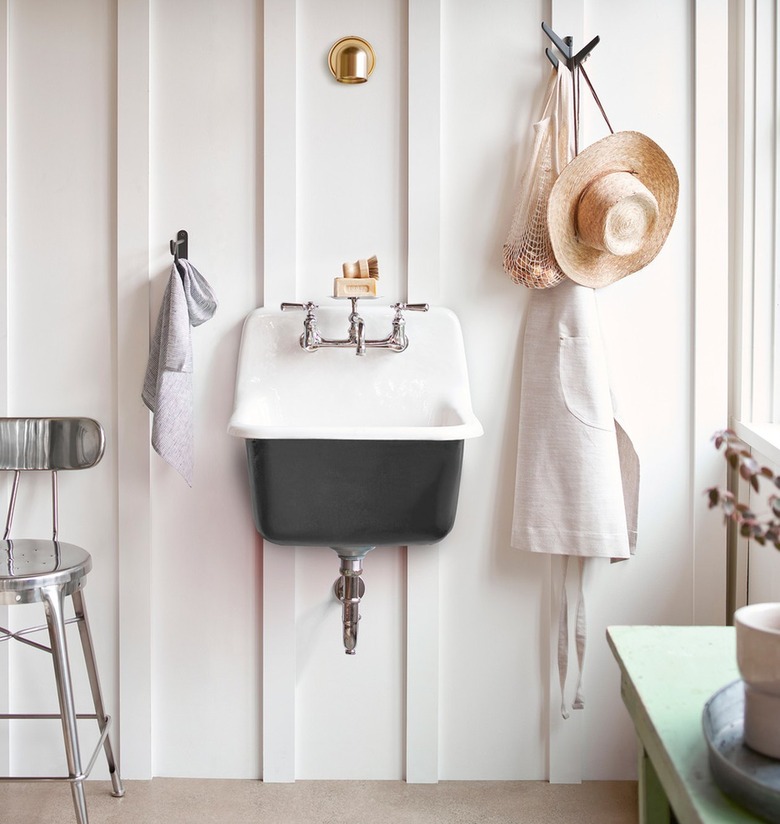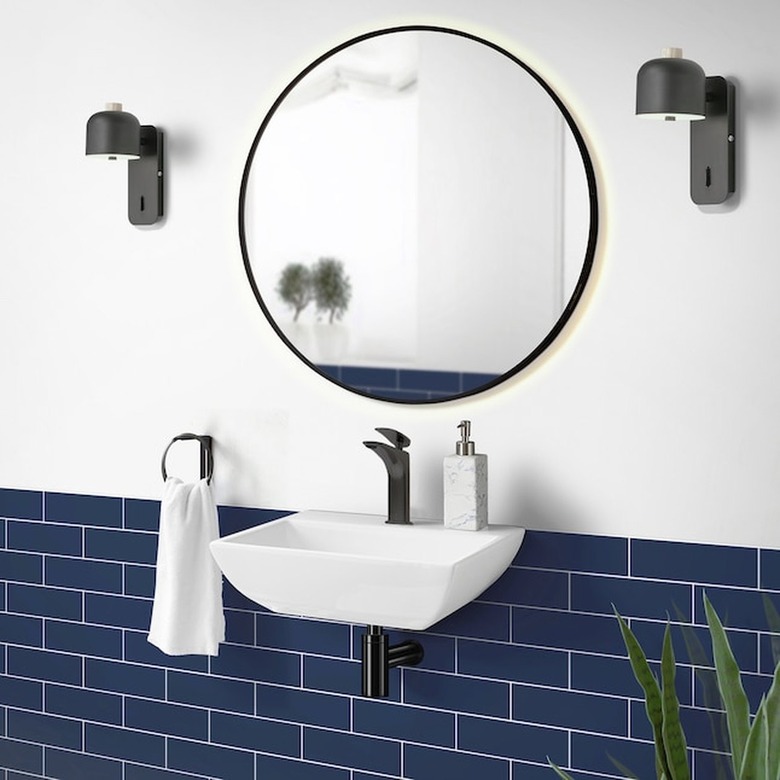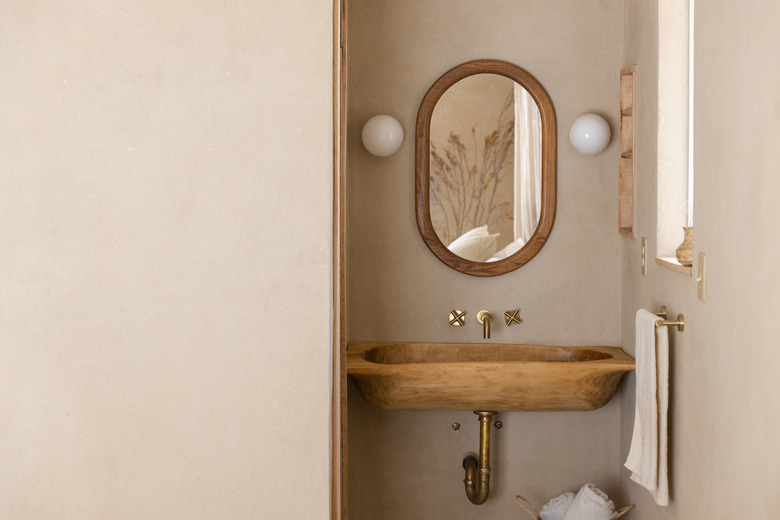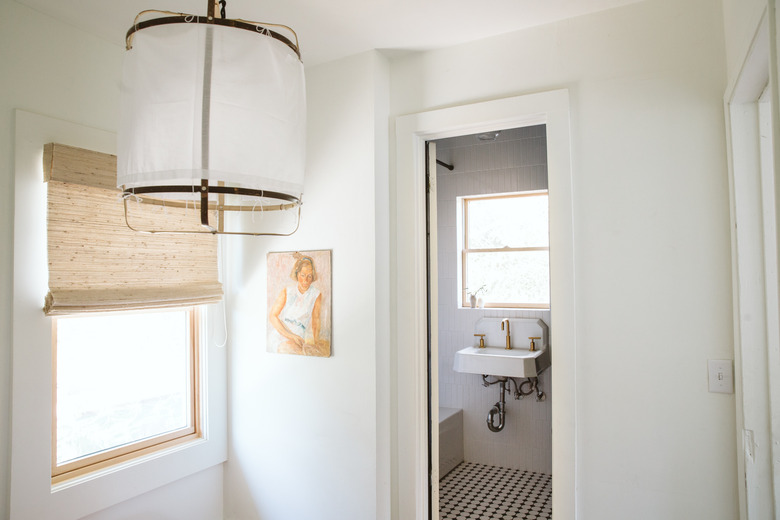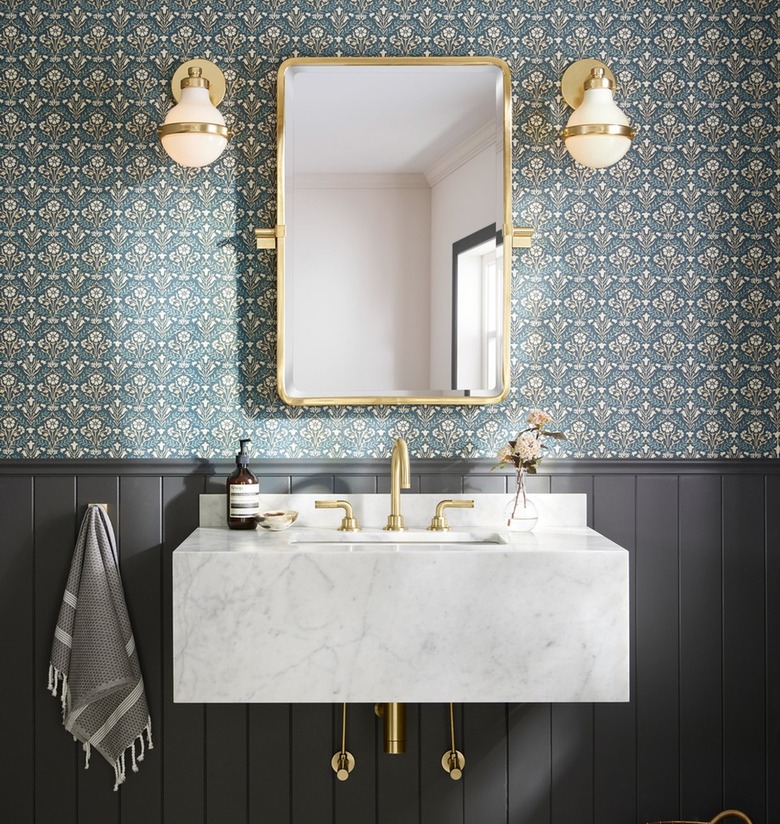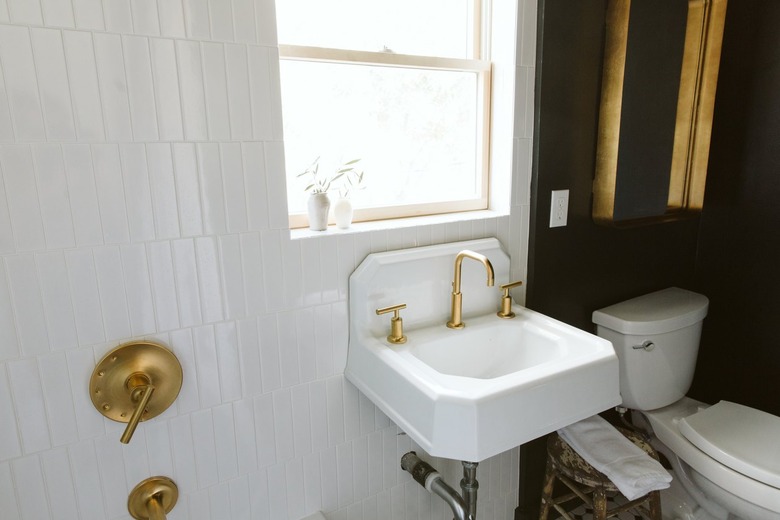Wall-Mount Bathroom Sinks: A DIY Homeowner's Guide
A wall-mount bathroom sink is often installed in smaller bathrooms as a way to make the area seem a little roomier, and in extremely tight quarters, it can be installed out of necessity as the only option to navigate through a narrow bathroom. And even if space is plentiful, installing a wall-mount bathroom sink in any bathroom is a great way to add a fresh and stylish appearance to the room.
A wall-mount bathroom sink is exactly what it sounds like — it is mounted to the wall with bolts and is attached only to the wall with no pedestal or vanity underneath. A wall-mount bathroom sink is the only type of sink that is open underneath and takes up no floor space. In many situations, this can be a real benefit, but not every bathroom situation is right for a wall-mount sink.
Like with most things, there are pros and cons to having a wall-mount sink installed in your bathroom, and these should be weighed carefully before deciding whether or not to install one in your bathroom. Whether you decide to install a wall-mount sink as part of a new bathroom, a remodel or just as a replacement for an old sink, you will most likely need a plumbing permit to do the work. Check with your local municipality about this before starting any work.
Pros of a Wall-Mount Bathroom Sink
Pros of a Wall-Mount Bathroom Sink
A wall-mount bathroom sink takes up no floor space, which can make a small bathroom appear a little bigger. A wall-mount sink can be installed in very small, compact areas where a vanity will take up too much space. If you've ever bumped your knee against a vanity in the middle of the night, this can be a welcome benefit.
If you are converting a closet into a bathroom (it does happen) or have a bathroom that seems to be the size of a closet, a wall-mount sink will fit and will give you a little room to move around. A smaller, narrower sink will give you more options in a small bathroom, while the variety of shapes and designs gives you several choices when choosing a style for a larger bathroom.
Another benefit of a wall-mount bathroom sink is that everything underneath is wide open, so if there is a water spill or a leak from the faucet or drain, it will be visible on the floor. A leak under a vanity, on the other hand, can go on for days or weeks before it is noticed, causing damage to the cabinet and floor and allowing mold and mildew to build up. It's easy to keep the floor clean under a wall-mount sink. Even with a pedestal sink, there are nooks and crannies that are difficult to clean. This is not so with a wall-mount sink.
Because it is wide open underneath, a wall-mount bathroom sink makes it far more wheelchair accessible than a vanity or any other type of sink. Many wall-mount sinks are also ADA approved. Protective linings and padded shrouds are available to cover the water and drain pipes under the sink all the way to the wall to prevent damage to the plumbing.
Cons of a Wall-Mount Bathroom Sink
Cons of a Wall-Mount Bathroom Sink
The first thing that most people think about when considering the disadvantages of a wall-mount bathroom sink is that there is no storage space underneath. While a vanity has hidden storage space underneath and visible storage space on the counter, a wall-mount sink has no cabinet or counter.
While it may be the only option for a bathroom with limited space, for many homeowners, this can be a real problem, especially if the bathroom has no additional closet or shelving to use for storage. Many homeowners will install a large medicine cabinet, storage shelves, or cabinets on the floor or wall or shelving above the toilet to offset this lack of storage space.
Another disadvantage, particularly for DIYers, is that a wall-mount bathroom sink is more difficult to install than a sink with a conventional vanity. A big reason for this is because wooden blocking must be installed inside the wall before installation in order to mount the sink to the wall. If you are replacing a wall-mount sink, the blocking will already be there. If not, the drywall will need to be cut in order to add some blocking and then repaired before the sink installation can begin. Along with adding extra work, this can make the project more expensive.
Wall-mount bathroom sinks can sometimes be an irresistible hazard to young children who want to pull down or even try to climb the sink. If your child mistakes your wall-mount sink for Mount Kilimanjaro, you can end up with a sink that is ripped off the wall and leaking plumbing. Even adults sometimes lean or press down on a sink without meaning to do so. If this describes someone in your household, putting a wall-mount sink in your bathroom may not be a good idea.
Wall-Mounted Sink Styles
Wall-Mounted Sink Styles
Most people have seen an old wall-mount sink in an older house or building. Those sinks all kind of looked the same, but today's wall-mount bathroom sinks are much different. Modern wall-mount bathroom sinks come in a variety of sizes and shapes. Corner wall-mount sinks are also available for very tight spaces. These sinks come in a large variety of materials, ranging from ceramic to cast iron.
While many homeowners like the look of the traditional, square wall-hung bathroom sink, there are models and designs ranging from double sinks to trough sinks for every style of bathroom. If storage is a real issue, you can find wall-mount sinks with additional counter space built in and sinks with towel racks. There are a large variety of prices as well — a traditional wall-hung bathroom sink might cost from $150 to $200, while a specialized trough sink or a sink with counter space can run upward of $1,000.
Wall-Mount Bathroom Sink Faucets
Wall-Mount Bathroom Sink Faucets
Faucets for a wall-mount sink come in a variety of designs and finishes, but your faucet choices will depend on your wall-mount sink's faucet hole arrangement. The configuration choices are a single hole for a single-handle faucet, a 4-inch centerset faucet or an 8-inch widespread faucet. You can also find specially configured sinks that are designed to have the faucet mounted on the side or even dual single-handle faucets. Whether you are more concerned about the looks of the faucet or the sink, it's important that the sink's hole configuration matches your faucet.
Another faucet option is a wall-mounted faucet above the sink. There are wall-mount bathroom sinks designed with no faucet hole for just this purpose. These faucets also come in a variety of sizes, designs and finishes. A wall-mounted faucet has a unique look and makes it easier to clean the sink, but the extra plumbing and carpentry work involved will increase the job cost. Installing a wall-mounted faucet can be tricky, so if you decide to go this route, it's a good idea to get a plumber involved.
How Do You Mount a Sink to the Bathroom Wall?
How Do You Mount a Sink to the Bathroom Wall?
Installing a wall-mounted sink is a job that's usually best-suited for a professional plumber, but here's what the installation generally looks like:
- The first step to installing a wall-mount bathroom sink is to install wood support blocking in the wall to support the sink.
- Once the blocking is in place, you can use screws or bolts to install the mounting plate that will hold the sink.
- Use a level on the mounting plate to make sure that it is level. If it's not, your sink will not sit level, and you will need to remove and reinstall the mounting plate.
- Then, attach the faucet and drain assembly to the new sink. The sink is then hung on the mounting plate and sometimes secured with extra bolts.
- Next, the water and drain pipes are connected. The plumbing for a wall-mount bathroom sink should be run out from the walls beneath the sink. With other types of sinks, including vanities and pedestal sinks, the water and drain pipes can be run from either the floor or the wall.
- Once the plumbing is connected, the water can be turned on to check for leaks.
